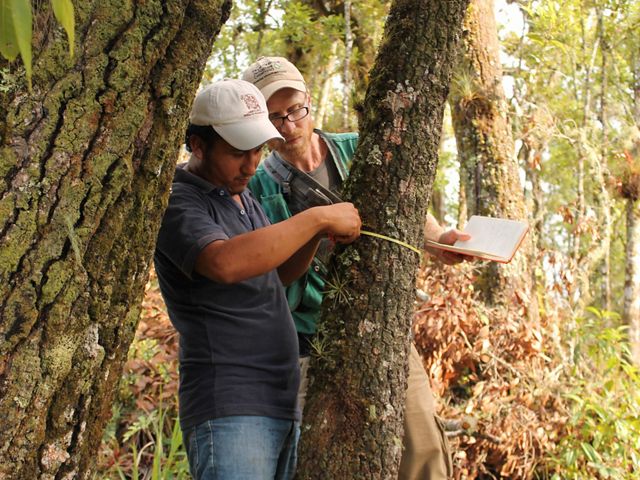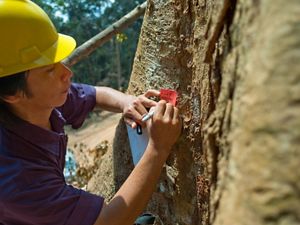Our Best Climate Solution is Circular
Sophie Beckham, Chief Sustainability Officer, International Paper
Decarbonization must play a central role in the COVID-19 economic recovery. While global greenhouse gas emissions are expected to fall slightly this year due to social distancing measures and economic shutdowns associated with the pandemic, global carbon dioxide levels remain at an all-time high. To keep global temperature increases under 2 degrees Celsius—the threshold scientists say must not be breached to avoid the worst climate impacts—we must increase carbon mitigation efforts, which include land stewardship.
There is enormous potential in decarbonizing with natural climate solutions, which are based on the conservation, restoration and improved management of forests, grasslands and wetlands. Research conducted by The Nature Conservancy (TNC) and other institutions estimates these approaches could deliver around a third of the emission reductions needed by 2030.
Advancing the circular economy is another important part of the solution, and it creates significant value for companies that embrace it. Nowhere has this opportunity been more clear than in the fiber-based packaging, pulp and paper industry, where International Paper works to make its entire value chain circular. For companies in this industry, improving the circularity of the value chain begins in the forest with the stewardship of our raw materials, and relies on the sustainable design, production and end use of the fiber-based products we create.

Leveraging natural climate solutions in global forests
Responsibly managed forests provide many benefits, including wildlife habitat, provision of clean air and water, supporting livelihoods and the power to mitigate climate change. Of all habitats, forests have the greatest potential to increase carbon storage and avoid greenhouse gas emissions through improved forest management, according to TNC.
Responsible forestry is a critical part of the circular economy because it enables us in the forest products industry to meet the needs of our customers while ensuring forests are replenished for generations to come. The paper industry can thrive only as long as forests also do.
Market-based tools such as forest certification are a great way to leverage natural climate solutions while strengthening a business model that values forests and helps address deforestation. That’s why in 2018, International Paper began working with TNC to co-develop natural climate solutions, focusing on the expansion of Reduced-Impact Logging for Carbon (RIL-C) and its integration with forest certification.
Quote
Market-based tools such as forest certification are a great way to leverage natural climate solutions while strengthening a business model that values forests.
RIL-C is a set of practices pioneered by TNC that balance the economic needs of forest-based communities and businesses with environmental goals—climate mitigation in particular. Our collaboration initially focused on implementing these practices in priority tropical forest regions in Indonesia and Gabon.
With International Paper’s support, TNC led the way in analyzing and implementing forestry practices that improve both carbon storage and biodiversity protection. After TNC developed regionally calibrated RIL-C modules in Indonesia and Gabon, a new Indonesia-wide assessment of logging impacts will form the baseline for national climate plans, and a new RIL-C module in Gabon is being integrated into its national monitoring system. RIL-C best practices are expected to deliver over three-quarters of Gabon’s climate commitments to the Paris Agreement.
Just this month, International Paper and The Nature Conservancy announced the next phase of our collaboration. This new work entails bringing the best RIL-C science to new frontiers in Mexico and the Central Appalachian region of the United States. It will focus on the development of a new integrated science toolkit for improved forest management—continuing to scale RIL-C in response to strong demand while introducing a new biodiversity monitoring component. This component is driven by bioacoustics—the latest technological innovation in holistic and cost-effective biodiversity monitoring.

A legacy of circularity
While in recent years the concept of circularity has grown in popularity, International Paper has been putting circularity into practice for over a century. In the fiber-based packaging and paper industry, every part of its value chain—from the use of renewable raw materials in the design of reusable, recyclable and compostable products to the manufacturing process itself—is naturally circular. In fact, International Paper plays a large role in the recovery of used corrugated packaging—known in the industry as old corrugated containers, or OCC—that it reprocesses to make new products.
But circularity is a journey and not a destination—the industry can always do better. One of the biggest opportunities to improve circularity is with fluff pulp—the white fluffy material that makes diapers and other hygiene products absorbent. While fluff pulp itself is renewable and recyclable, the products it goes into often are not.
That’s why, as part of its Vision 2030 Goals, International Paper has committed to renewable solutions that accelerate the transition to a lower-carbon economy through innovative fiber-based products. The target is to advance circular solutions throughout its value chain, while creating innovative products that are 100 percent reusable, recyclable or compostable. Achieving this goal requires collaboration with all of the company’s stakeholders—including International Paper’s customers and consumers who play a role in how its products are used, reused and recycled.
Quote
Circularity is a journey and not a destination — the industry can always do better.
Aligned with the global priorities of the United Nations Sustainable Development Goals, International Paper’s goals accelerate the progress toward achieving the company’s vision—while driving sustainable outcomes for people, communities, the environment and its customers.
Even as the global pandemic endures, International Paper will continue to advance natural climate solutions by leading on forest stewardship and circularity. About 45 percent of global greenhouse gas emissions can be addressed through the circular economy, says Ellen McArthur Foundation. Meanwhile, shifting from a take-make-waste economic model to a more circular one promises to unlock trillions of dollars in economic value. Our team hopes that our industry’s example inspires other sectors to realize the value of natural climate solutions—both within and outside of their value chains.
Originally posted on Greenbiz
August 24, 2020
View Original
Global Insights
Check out our latest thinking and real-world solutions to some of the most complex challenges facing people and the planet today.



